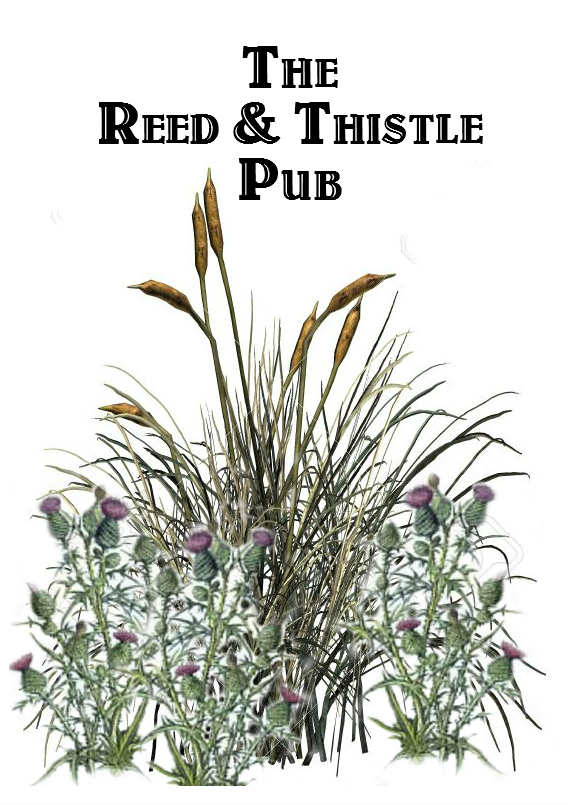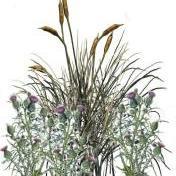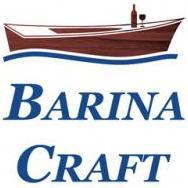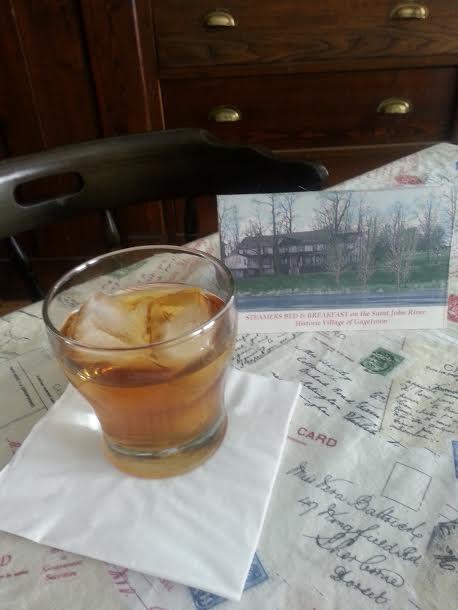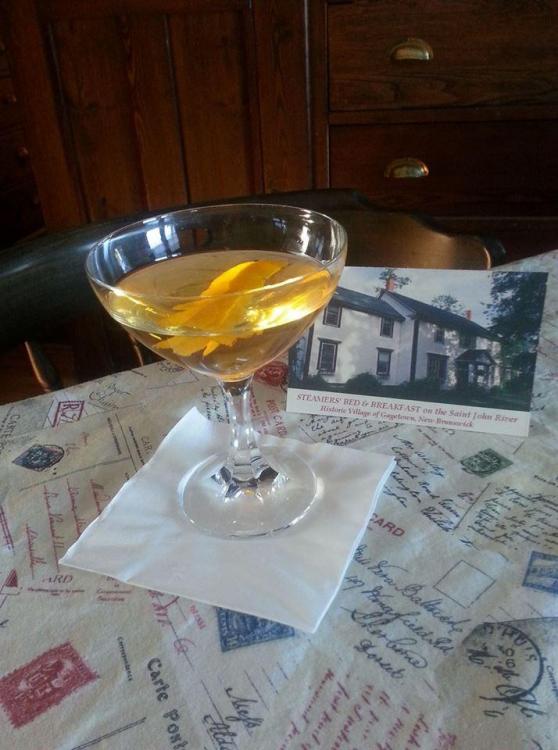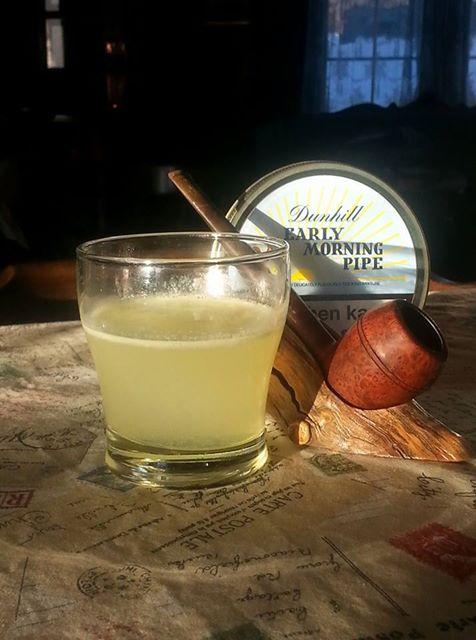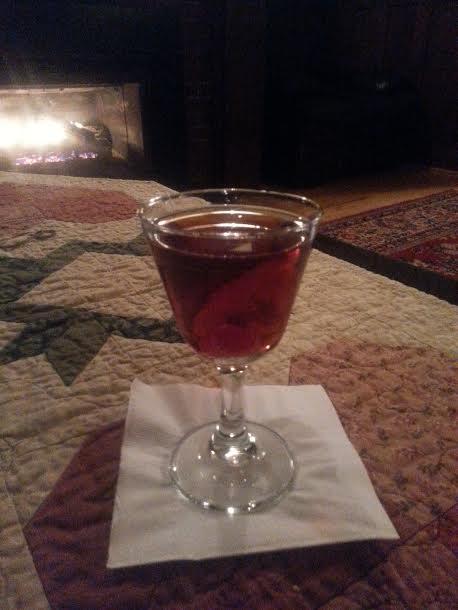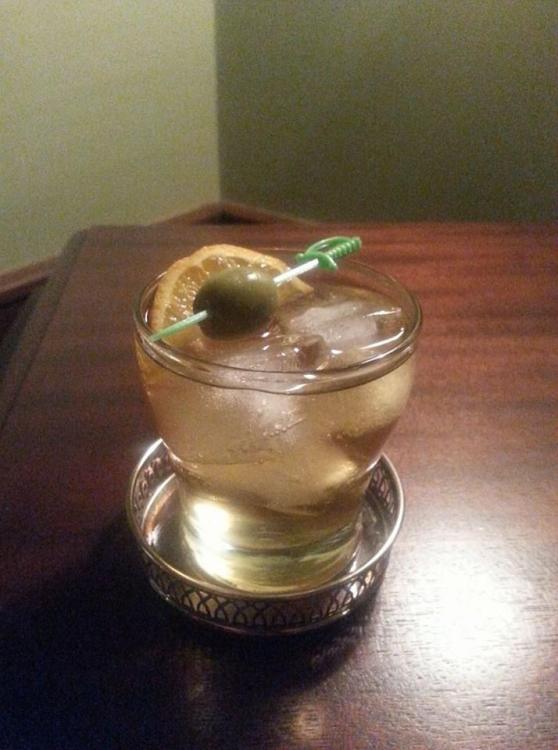-
Posts
32 -
Joined
-
Last visited
Contact Methods
-
Website URL
steamers-nb.ca
Profile Information
-
Location
New Brunswick Canada
Recent Profile Visitors
2,245 profile views
-
The discrepancies in the Savoys definately deserve a bit more attention, but there are some holes here, and I am not prepared to dismiss it based on the Black Russian by itself. The assumption that the Black Russian wasn't invented until later, as asserted in the Wondrich take in the esquire article, is based on a source dated 1961 which included a black Russian, and the presumption that naturally that it contrasts another drink, presumably a white Russian, to which wasn't listed. And the similarities between the two, it seems a pretty safe conclusion, . But the hole that remains as Mr. Wondrich puts forth is that the white Russian came into being with the trendy Kahlua. So taking that forward, if the edition of the Savoy that I have was printed after the invention and inclusion of kahlua drinks in the 1960's, then would it not be probable that other popular rinks invented in the next 30 years would also be recorded in it (which I am in the process of looking for in case there are, which would be a give away). And then if these two drinks were concurrent why isn't the a White Russian in my Savoy? One possibility is that the Black Russian is named to distinguish it from another drink as Wondrich suggests, but what if that is simply the Russian which likely used a white creme de' cacao considering the other components. The other problem with that is that Craddock avoided using brand names unless they were truly pertinant to the cocktail, such as the Marnie. Beyond that if a coffee liqueur was common in the market place he would have most likely just stated "coffee liqueur", particularly in that Kahlua is a rum base, why would he specify coffee flavoured brandy? Could it not just as easily be that coffee flavoured brandy not being a product that could be acquired commercially the drink was essentially forgotten until the coffee flavoured Kahlua entered the market place. Thought to ponder, and certainly I will be digging deeper into the two editions to search out any further discrepancies Gary
-
Definately different editions, but it's hard to speak against it's age as all its publication page says 1930. I might suggest one possibility is that the version I have was the one released in the US market where Absinthe was illegal, while the other may have been the European publication?
-
Apparently the hard cover is published in 2015 from Gerard and Stewart, while the paperback was published 2013 from Lightning Source Inc
-
My copy lists the Black Russian (exactly as I have written it above) on page 29 between the Biltrong Dry Cocktail and the Black Velvet. The Russian as you have described is the bottom of page 138. There is no White Russian. One thing worth noting which may be of interest is I have encountered another variation in the Savoy's printings. My copy, the first pages of Cocktails (Page 16 and 17) are different than those appearing on the online amazon preview. My edition lacks the three Absinthe cocktails with page 16 having only the Abbey and the Addington (which appears on top of page 17 on the amazon preview). Another variation occurs on page 25 with the B. AND B. appearing between the Aviation and Babbies Special Cocktail, and lacks that Atty Cocktail and the Balm Cocktail. My edition is the paperback, where as the online preview is said to come from the hard cover. there are other minor differences I can see too, mine lists the publisher and date on page 4, where this page in the Amazon preview appears as page 6 without the information, just the graphic. So although there are no differences recorded in publishing dates, there are definitely two editions.
-
You know what's great about being on leave? Well aside the the not shaving, (which my dear wife Lisa has been wonderful about humoring me with) is the fact I can whip up a drink in the late morning while deciding what I am going to make for lunch. So going through the list I noticed one of the drinks that I had flagged as being a variation on a well known drink that I had entertained while compiling the list in during my previous deployment to a dry nation, and by dry I mean both alcohol free and environmentally. So now I get so see if the variation actually works. The Black Russian. Everyone knows this one. Vodka and Coffee liqueur (typically Kahlua, but I personally find Tia Maria is the superior of the two). But here's the thing, these modern Coffee liqueurs are actually rum based, and the old Savoy recipe which predates both of these commercial liqueurs calls for Coffee flavoured Brandy. So, I decided what if we put the Brandy back in the equation. Added a note to the list and continued on. That brings us up to today. Time to try the well known Black Russian with a dash of Brandy. The result, well I can only guess that Brandy has been left out of the equation for the last few decades for the same reason that bottled coolers and every cocktail on the market in the 80's on was called a called a WTF Martini. A victim of night club bar tenders and death of the art of bar tending. The Brandy has elevated this from being a famous college cocktail to actually deserving the title of classic cocktail. And as a side note who said drinking doesn't solve problems? Well not many major ones, but while typing Lisa informed me lunch was ready. Well one less problem. I guess my next problem will be what to drink while I decide on what to make to go with the salmon for dinner. Gary Savoy 1 1/2oz vodka 3/4 oz coffee flavored brandy pour over ice cubes in an old fashioned cocktail glass R&T 2 oz vodka 1 oz Tia Maria bsp brandy stirred, on ice, old fashioned glass
-
Ah, the sad reality is that it is nothing fancy, just Bols Why, because it is all I can get.
-
That is an affirmative. This afternoon's romp through the yet untried cocktails from the R&T master list, the Dolly O'Dare. One of the pre-prohibition era's formulaic cocktails, Dry Gin, French Vermouth and a sweet liqueur. This combination practically defines cocktails of the 1920's. In this case the Liqueur another staple of the era, Apricot Brandy. Proportionally there is more of the Apricot brandy than would be typical, taking the balance definately to the sweet side. Savoy 6 dashes Apricot Brandy 1/2 Gin 1/2 French Vermouth R&T 1 1/2 oz Apricot Brandy 1 oz Gin 1 oz Dry Vermouth Yes I said 1 1/2 oz and you are right that makes one sticky drink, but then I am not entirely sure it wasn't meant to be that way. No it's not balanced, but if you are looking for the effect of making a sweet drink that completely masks the alcohol , essentially an early "girl drink" this is your formula. Whether the intention was to dare Dolly to put a couple of these back in order to get her impaired, or Dolly herself is a fem-fatal both are as likely as the other. And if you are looking for a pre-prohibition girl drink drunk, well here you go. So what happens when you dial this back to be less overwhelmingly sweet? Well for the sake of experimentation I free poured three " dashes" (in this case being the smallest amount I could reasonably pour) in a measure and came up with about 1/2 oz, to that I added 1/2 oz Gin and 1/2oz Dry Vermouth. the result is definitely more balanced and in line with what I expect. Much more flowery, in fact the biggest improvement is probably the nose, and while the balance is far better and the initial impression is the drink is much better. But after a couple sips, the reality that this is a pretty unremarkable drink sets in and the desire to finish even a half portion fades. In this ratio this is a drink to sip at over a period of time with enough of a space between sips to allow the palate to reset in order to maintain interest. This is one drink that the overly sticky, poorly balanced version geared to someone who doesn't really like alcohol is the better choice. But hold the press before I close this chapter there is one more thing to be done. Now with equal portions of the 3 component alcohols lets go for the bonus round. The unimpressively named Darb Cocktail calls for 1/3 portions of each and 4 dashes of lemon juice. So before we put this to bed how about we go there and close the book on that Drink too. So what do you think the result here will be? Well if you said better you would be wrong. The pleasant floral note and whatever made it that you could return to it pretty much just disappeared in a citrus haze. Nothing more to see here, lets just move along. Gary
-
Good Morning . Testing out the Master List is a job that will take some dedication, and today that means suffering the social ills of morning drinking. But really could there be any other way to check out the somewhat infamous CORPSE REVIVER No.2. Gin, Lillet (or in our case our own rough approximation that works well enough because NB Liquor doesn't carry it and we can't sell anything that doesn't come through them), cointreau, lemon juice and absinthe. Technically in the family of sours, this one is light and extremely pleasant and certainly could go downrange very easily, but proportionally this is a high test cocktail that doing so would put you back where you were the night before in no time. Unlike the Gin Sour, the Lillet (or our substitution for such), the orange tones of the Cointreau and the absinthe almost completely eliminate the gin aftertaste with the absinthe having the final say. Oh and it is worth mentioning that we are upping the game and leaving the Absente behind us and going with an actual absinthe produced here in New Brunswick which has managed some accolades, La Courailleuse form Distillerie Fils du Roy. For our purposes here and the lack of proper Lillet until I can work something out with another Bar and NB liquor and maybe get it ordered, I had to improvise. Honestly not having any Lillet on hand to really attempt to mimic, I am shooting in the dark. But in my favour the drink still works fantastically, and nobody in these parts is likely to be able to tell me how off I am, so I can bluff this one, no problem, and have our own unique Corpse Reviver No.2. If anyone out there can help me improve on my fakery, that would be awesome. So at present I know Lillet is an apartif wine, with citrus and flowery notes. So I figure, here the Gin can help along the herbal stature of the drink, which leaves me tending to the orange nature. Not wanting to count on Cointreau entirely for that, I decided to muddle Dry Vermouth with a piece or orange peel, and in an added attempt to get a bit of the bitter nature of Kina Lillet as it has been described, I took a second pass with the peeler to get a piece of the white bitter pith. I am thinking in the future a combination of Dry vermouth, muddled orange peel and a dash of grapefruit bitters when I can get my hands on some. Anyway, your thought would be appreciated. Gary
-
Initially no it was an oversight, but once I started playing I thought that their absence made it easier to look at and get ballanced. As I had them side by side, I then added the bitters to both and it really didn't add much to my previous thoughts. Doubling up with the Gin, and another dash of angostura, and problem solved.
-
Next up is one I normally wouldn't gravitate to, but this game demands sacrifice and I'm going to get here eventually. Besides somehow this on actually intrigues me. Almost quintessential staples of the pre-prohibition cocktails Maraschino Liqueur, Italian and French Vermouths. and here they are all on their own, no Gin, no Rye, no orange juice or bitters. Today's cocktail the Cherry Mixture Cocktail. OK this one has a some trial and error involved so lets take a lok how this goes down. Savoy 1/2 French Vermouth 1/2 Italian Vermouth dash Maraschino So looking at this we know that classically the two 1/2 measures would be 1 oz each, and the dash is an arbitrary debatable yet essentially small amount. That leaves me a starting point as a 3 oz drink looking like : R&T trial#1 1 1/2 oz Dry Vermouth 1 1/2 oz Sweet vermouth 2 bsp Maraschino OK, last post I touched on this in discussion. 1 conservative bsp being the starting subsitiute for a da. and with a 50% increase in volume lets see how 2 bsp does to tame 3 oz of vermouth. Thoughts, The Vermouth here pretty much is the show, and I can't honestly think of a description, but then I guess I don't really need to. So how about the Maraschino. This as we all know is a subdued liqueur but despite that not overly subtle, with this combination, I though a little more would help give character to the vermouths. And depending on taste, this is drinkable and the character of the Maraschino is about equal to the character of the vermouths. the result is maybe what I could best describe as likening to a desert wine. That said I personally feel that it is too sweet and the maraschino is almost at odds with the Vermouth and not really ballanced or complimentary. So... R&T trial #2 1/2 oz Dry Vermouth 1 1/2 oz Sweet vermouth 1 bsp Maraschino Marked improvement, the vermouth cleans up and is much more lively in fact a conservative BSP may be too subtle, after the last incarnation the Maraschino is barely detectable, so a proper (not gernerous) bsp Seems to provide the right balance of the positive traits of the aparatif wine and the sweetness and character of the maraschino. If I was really in the mood I might consider actually upping the ratio of dry to sweet vermouth too. BUT in the end trying to truly refine this drink is a bit of an exercise in futility. It is far from being epic, and there is a reason these are all sidekicks in more masterful libations. Like a comic book with Aquaman, Hawkman and Batgirl. No mater what you do to it's it just isn't going to be remarkable. Now maybe I'll go throw some Gin and bitters in this and have a much better Martinez to wrap up the evening. Gary
-
Thanks for the thoughts. I tend to agree that in most cases the Cointreau will probably serve better than the Grand Marnier, and at the price point I sure it will please most patrons. With limited selection here, certainly getting the best liqueur will be a struggle I will be enduring throughout, and have to make up for it with quality ingredients throughout. And lets face it not everything turned out the the old books is a home run either. Tanstaalf, your comment on 2 bsp vs 2 da is very much a relevant and possibly in dept discussion in and of it self. That being what in vintage manuals actually is a dash of spirits? Even Mr. Wondrich in his book IMBIBE, admitted that that is really variable from one author to another and from one drink to another and one spirit to another. if one were to assume a dash of spirits being a consistent down/up dash movement as one would do with a bitters bottle only using a bottle of spirits and a pour then one regularly produces around 2 bsp to 1/4 oz. That is a truly significant jump from what most conventional interpretations, but not necessarily out of line in some drink recipes. As such I have settled on a measure of 1 conservative bsp as a starting point in most cases, and developing from there. So onto today's Entry the Barbary Coast, again from the Savoy Savoy 1/4 Gin 1/4 Scotch Whisky 1/4 Creme de Cacao 1/4 cream R&T 3/4 oz Dry Gin 3/4 oz Rye 3/4 oz Dark Creme de Cacao 3/4 oz 10% cereal cream The nose is very much chocolate and the first taste is too, the herbal tones of the gin are very evident immediately after, but tamed down from the whisky, additionally they keep the sweetness in check. The Savoy recipe calls for Scotch, which I don't suspect really would add to this. Not many Cocktails really shine with scotch IMO, so Rye it is. In fact I think that the Rye does a better job of marrying the Gin and the Creme De Cacao than the Scotch would. The cream and chocolate flavour really secures this as an after dinner cocktail and although this one is 75% alcohol, it is very smooth. Not a lot of interpretation in the proportions here and for what it is, I don't feel that departing from them is needed. This one is essentially an Alexander with Whisky added. Myself I prefer the Brandy Alexander to the Gin varriant, this one lands right between the two for me.
-
Certainly; Jameson's Irish Whisky, Luxardo Maraschino Liqueur, Grand Marnier Curacao, and Absente. Here there is not much selection for Curacao, it is either Grand Marnier of Bol's Blue. The only realistic substitution could be Cointreau which would probably be OK in this drink.
-
OK, so here is the first drink (ok I had a couple others I will go back to as I didn't take pics) and I apologize for the poor image this time, I will do better. From the Savoy: The Irish Cocktail (no I'm not doing them in any order). 2 dashes Pernod 2 dashes Curacao 1 dash Maraschino 1 dash angostura bitters 1/2 glass Irish Whisky Shake well and strain into cocktail glass. Add olive and squeeze orange peel on top. As made for the R&T 2 oz Irish Whisky 2 bsp Curacao 1 bsp Maraschino 1 bsp Absente da angostura bitters Stirred, over ice in old fashioned glass, Garnish with olive and orange slice. Observations: the Irish whiskey and curacao are pretty self evident, but the absinthe and maraschino are quite subtle and do elevate it to a more interesting drink than say the Approve. As a huge fan of the Old Fashioned, this is comfortably familiar, the curacao and Maraschino definitely add the sweetness that the sugar would add there, the absinthe adds a bit more depth, but almost makes it a Old Fashioned/Whiskey Sazerac hybrid. And to be honest It doesn't really improve on either. A good strong whisky drink when looking for something different and if you are partial to either of those worth a try once and make up your own mind. Oh and the Olive doesn't really seem to add or detract from the drink other than just give it a WTF factor. Cheers Gary PS Barina, yes Other Resources will be used as I go, and the Master List will continue to grow but to be brutally honest The Savoy is just one of books that is kind of known and has a bit of everything, and the Waldorf, while it has a tonne of minute Martini Variations, that I am just not bothering with as they really seem to be notes on one regular customer's preferences than actual cocktail variations, there are a few gems in there worth reviving, and how do you ignore the history of the Waldorf-Astoria, it gust goes well with the whole theme of the Pub and the B&B. And if a few prohibition era drinks get through all good, the Building has an extension that was added in the early thirties too. So I'm not being all that dogmatic about the pre-prohibition rule, especially on the Master list that really, many of the drinks I suspect will never be ordered.
-
there is a call for a spiced rum at the bar outside of exclusively cocktail purposes, and as it is a staple for that aspect. No reason not to use it in cocktails when appropriate.
-
AYE, What's available here in New Brunswick is an issue. Myself and another pub will be talking in the near future about splitting a couple cases and of what as that is the only way to place special orders here. Undoubtedly our drink list will expand with the inclusion of different bottles that will enter the rotation from time to time, but may they not be permanent additions to the back bar as they may not always be available, thus not guaranteed a place on the Master list. And yes Canadian, Bourbon, Rye, Irish and Scotch are in our regular stock.

